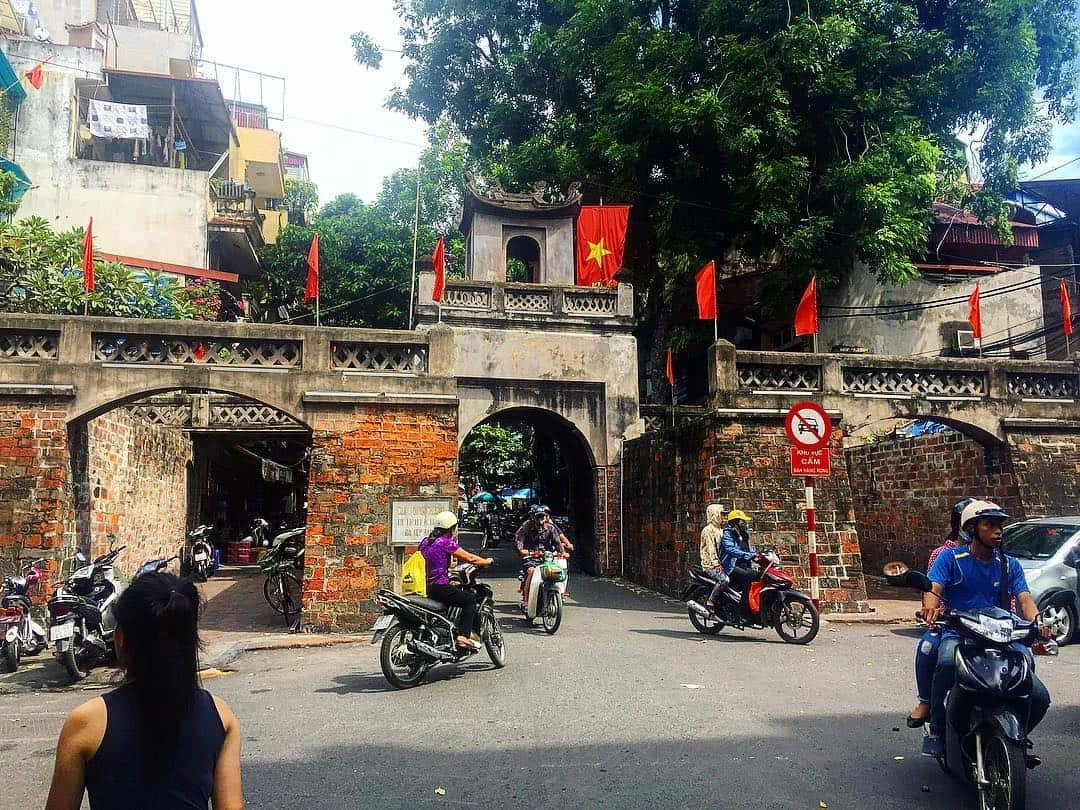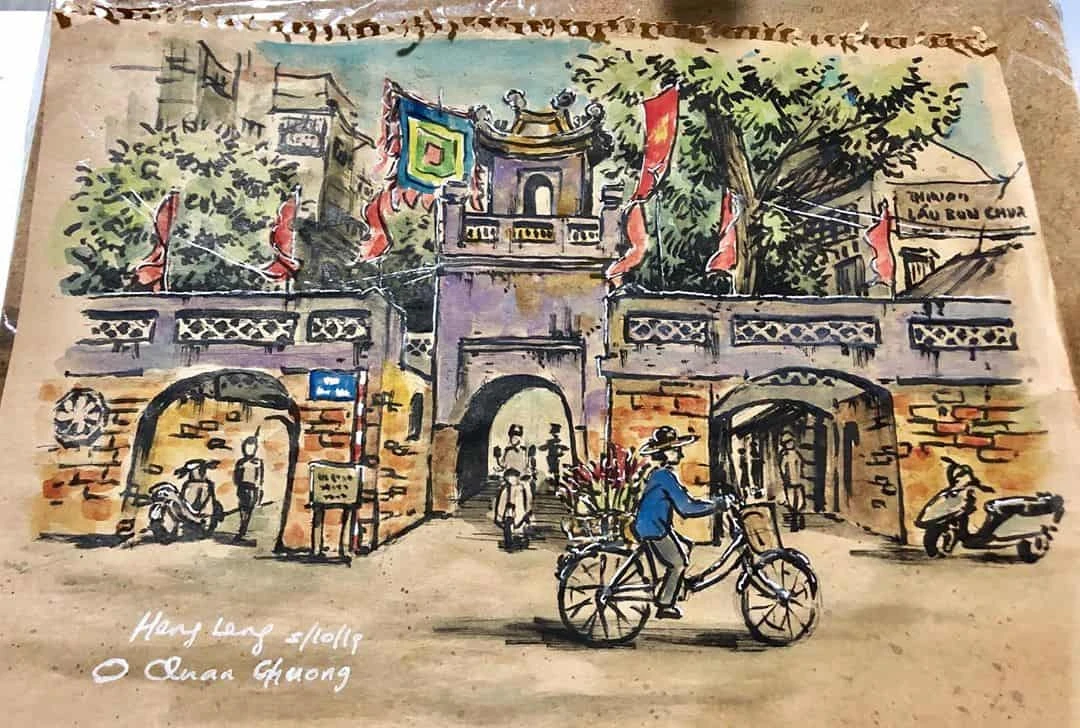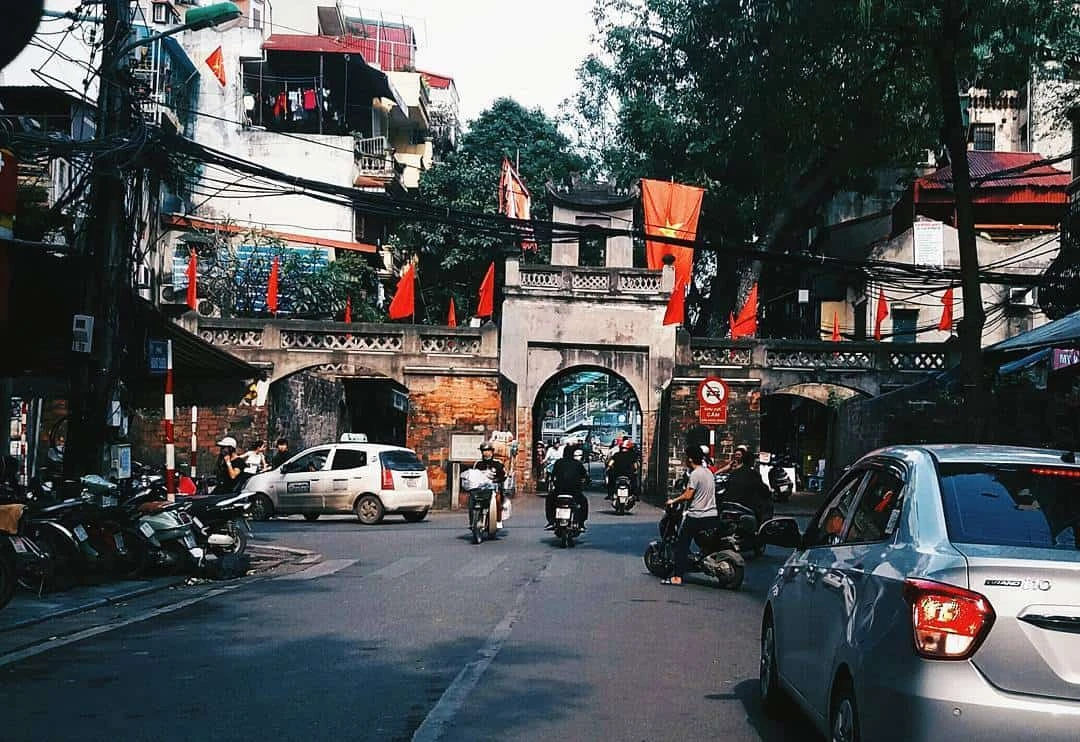
Old East Gate (Ô Quan Chưởng), Hanoi: The Last Remaining Gate of Thang Long
When visiting Hanoi, the over-1,000-year-old capital of Vietnam, it’s hard to miss the opportunity to explore its rich history and cultural landmarks. Among these, the Old East Gate (O Quan Chuong) stands out—not just for its historical significance, but also for its lasting connection to the daily life of Hanoians.
I. History and Values of Old East Gate
The ancient Thang Long Citadel was a bustling city, which used to be the capital of Vietnam through many different dynasties. As a center of culture, a system of rampants, temples and mausoleums was founded, spreading in a large area.

In medieval times, Thang Long Citadel had 21 gates, with five most famous ones:
- Cau Giay Gate
- Cau Den Gate
- Dong Mac Gate
- Cho Dua Gate
- Quan Chuong Gate (Old East Gate)
The Old East Gate, built in 1749 during King Le Hien Tong’s reign, stands 80 meters from the old Red River wharf. While ancient in origin, its current appearance dates to an 1817 restoration.
Originally named Dong Ha Gate (“East River Gate”), it gained its current name after a heroic battle in 1873. When French forces attacked Hanoi, a Nguyen Dynasty commander and 100 soldiers defended this gate to their deaths. The name Quan Chuong (“military leader”) honors their sacrifice.
During French colonial rule, most of Hanoi’s gates were demolished for urban expansion. Thanks to local resistance, the Old East Gate survived and remains the last standing gate of ancient Hanoi.”
II. Highlights and Architecture of Old East Gate

1. Location
Old East Gate is to the east of Hanoi Old Quarter, which is at the intersection of Hang Chieu, Dao Duy Tu, Thanh Ha and O Quan Chuong Street. It is only about 1.5 kilometers to the north of Hoan Kiem Lake and 0.5 kilometers to the south of Long Bien Bridge. From Old East Gate, tourists can go on a visit to attractive destinations of Hanoi Old Quarter, discover the delicious specialties and wander to feel the hustle and bustle in the daily life of the locals.

2. Architecture
As Hanoi’s only surviving gate, O Quan Chuong retains most of its original architecture and structure. Built in the typical Nguyen Dynasty style, this two-story gate features wooden-hammer brick and stone construction. The main building material is brick, identical to that used in the walls of Quoc Tu Giam.
The first floor features three entrances:
- Main door: 3 meters high and 3 meters wide
- Two side doors: 1.65 meters wide and 2.5 meters high
All doors showcase a distinctive vault style design, departing from the flat style common in earlier constructions.
The second floor consists of a pavilion with a curved rooftop. Originally used as a guard observation post, it now serves as a flagpole location for special occasions.
Notable features:
- Above the main entrance: The gate’s former name “Dong Ha Mon” in Chinese characters
- Left side of main door: An 1881 stone stele bearing Governor Hoang Dieu’s order prohibiting guards from interfering with local funeral processions
Today, O Quan Chuong serves as a gateway to Hanoi’s Old Quarter, standing as a bridge between the city’s historic past and modern present.
III. How to Get to Old East Gate?
1. By Car
Due to the narrow streets in Hanoi Old Quarter, you are not advised to go to O Quang Chuong by car. Besides, it is not easy to find a parking place there and going by car will prevent you from feeling the beauty of Hanoi’s streets.
2. By Bus
Public transportation in the center of Hanoi is quite convenient, which takes tourists to worth-visiting destinations in Hanoi. Moreover, some buses will even help you to reach Hoan Kiem Lake, Thang Long Imperial Citadel, Ho Chi Minh’s Mausoleum, West Lake and so on.
3. By Motorbike
Motorbike is the most ideal vehicle for visitors to reach well-known places of Hanoi, including Old East Gate. You can hire a motorbike in your hotel, or book a Grab bike to reach Old East Gate. From this gate, by walking, you will have a chance to come to other attractive places and have a meal with local foods.
IV. Extra Tips
- Old East Gate is to the east of the Old Quarter, the center of Hanoi, so it is quite easy and convenient for tourists to discover an ancient Hanoi in the neighboring areas.
- Some places of interest that you can visit near Old East Gate are Dong Xuan Market, Long Bien Bridge and Bach Ma Temple. If you intend to go shopping in Dong Xuan Market, don’t hesitate to bargain.
- Don’t forget to enjoy the delicious cuisine of Hanoi with Beef Noodle (Pho Bo), shellfish soup and vermicelli (Bun Oc) and Banh Cuon and pork rib porridge (chao suon).
- Nightlife in the Hanoi Old Quarter is one thing you should not miss when visiting Hanoi. There are a lot of night bars and clubs in the surrounding area of Old East Gate, which draw a picture of a sparkling and lively Hanoi.
- Nearby Old East Gate has long been famous for cheap-price hotels and hostels, so you will have a wide range of choices for accomodation to stay in Hanoi.
- If you travel to Hanoi for the first time and want to wander around to discover the Old East Gate, don’t forget to prepare a map in case you get lost.
Hanoi Old East Gate is an historical construction that retains the ancient features in the capital of Vietnam. The gate reminds Vietnamese people about the tradition and resilient spirit of the previous generations, as well as become the symbol of the ancient capital. Not only does the gate embellish the antique beauty of Hanoi Old Quarter but it also preserves values of a thousand-year-of-civilization Hanoi.
>> Check out: Communicating with Vietnamese People
Link nội dung: https://uuc.edu.vn/old-east-gate-o-quan-chuong-hanoi-the-last-remaining-gate-of-thang-long-a14109.html